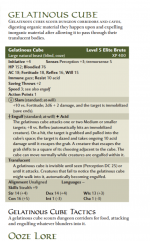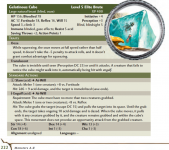This was never an issue for me. I don't know, because I was new to D&D back in the day, and didn't had any preconceived ideas of how things should work, and was really aware that this is a game. If my group was going to nitpick about tripping a gelatinous cube (a fantastic creature from magicland), then we should have to complain about dragons, elves, magic, etc...
So, my logical fix was to think that whatever equivalent to the "sensory organs" of the cube were reaccommodated during the tripping, and the cube needed a time to reorganize his body to sense the adventurers again. It's a fantasy creature, after all. Not something real. It doesn't need to follow the logic of our real world.
We are, my friend. We are...



